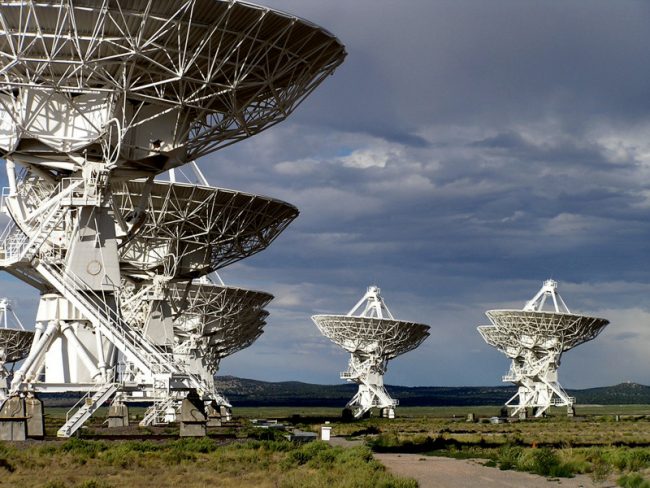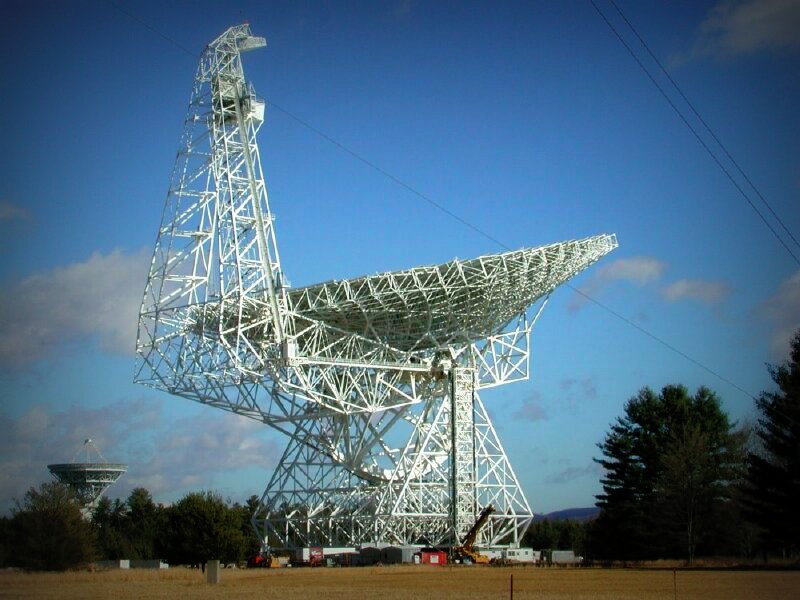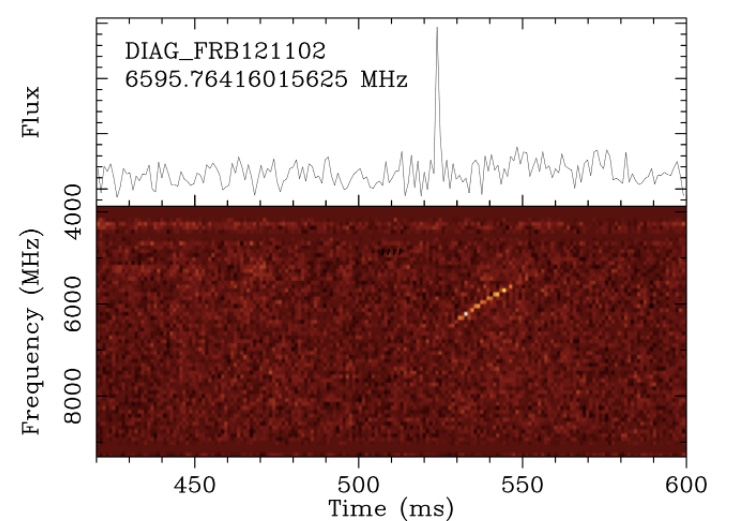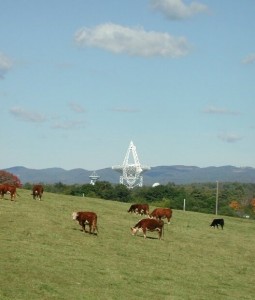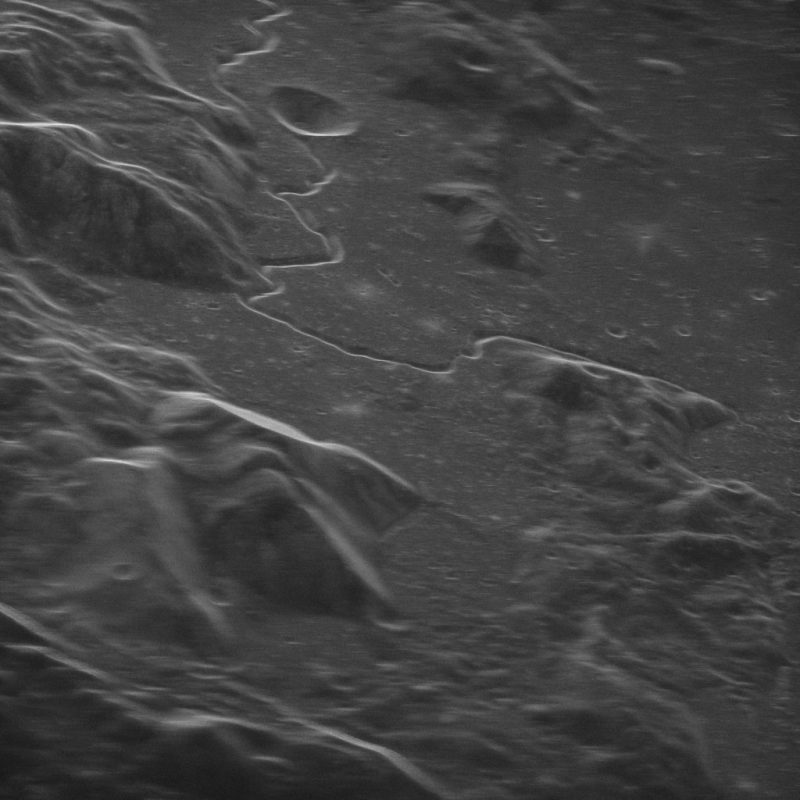
GBT-VLBA radar image of the region where Apollo 15 landed in 1971. The snake-like feature is Hadley Rille, a remnant of ancient volcanic activity, probably a collapsed lava tube. The crater at top, alongside the rille, is called Hadley C and is about 6 kilometers in diameter. This image shows objects as small as 5 meters across.
(Credit: NRAO/GBO/Raytheon/NSF/AUI)
Radio Waves: Stories Making Waves in the World of Radio
Because I keep my ear to the waves, as well as receive many tips from others who do the same, I find myself privy to radio-related stories that might interest SWLing Post readers. To that end: Welcome to the SWLing Post’s Radio Waves, a collection of links to interesting stories making waves in the world of radio. Enjoy!
Successful Test Paves Way for New Planetary Radar (NRAO)
The National Science Foundation’s Green Bank Observatory (GBO) and National Radio Astronomy Observatory (NRAO), and Raytheon Intelligence & Space conducted a test in November to prove that a new radio telescope system can capture high-resolution images in near-Earth space.
GBO’s Green Bank Telescope (GBT) in West Virginia — the world’s largest fully steerable radio telescope — was outfitted with a new transmitter developed by Raytheon Intelligence & Space, allowing it to transmit a radar signal into space. The NRAO’s continent-wide Very Long Baseline Array (VLBA) received the reflected signal and produced images of the Apollo 15 moon landing site.
The proof-of-concept test, culminating a two-year effort, paves the way for designing a more powerful transmitter for the telescope. More power will allow enhanced detection and imaging of small objects passing by the Earth, moons orbiting around other planets and other debris in the Solar System.
The technology was developed as part of a cooperative research and development agreement between NRAO, GBO, and Raytheon.
“This project opens a whole new range of capabilities for both NRAO and GBO,” said Tony Beasley, director of the National Radio Astronomy Observatory and vice president for Radio Astronomy at Associated Universities, Inc. (AUI). “We’ve participated before in important radar studies of the Solar System, but turning the GBT into a steerable planetary radar transmitter will greatly expand our ability to pursue intriguing new lines of research.”
Using the information collected with this latest test, the participants will finalize a plan to develop a 500-kilowatt, high-power radar system that can image objects in the Solar System with unprecedented detail and sensitivity. The increased performance also will allow astronomers to use radar signals as far away as the orbits of Uranus and Neptune, increasing our understanding of the Solar System.
“The planned system will be a leap forward in radar science, allowing access to never before seen features of the Solar System from right here on Earth,” said Karen O’Neil, the Green Bank Observatory site director.
“Raytheon’s radar techniques could ultimately improve our ability to explore the Solar System,” said Steven Wilkinson, Principal Engineering Fellow at Raytheon Intelligence & Space. “Working with the astronomy community allows us to apply decades of radar know-how to a project that provides high-resolution images of near-Earth objects.”
“We are excited to be partnering with Raytheon and applying their radar expertise to transform our observatories’ telescopes in new science areas,” said AUI President Adam Cohen.
The National Radio Astronomy Observatory and the Green Bank Observatory are facilities of the National Science Foundation, operated under cooperative agreement by Associated Universities, Inc.[…]
WBCQ: Radio transmitter engineers wanted
WBCQ Radio is seeking radio transmitter engineers to work at our 500KW shortwave station. Come to northern Maine and get away from it all. Nice working environment, good pay, great people, fun work with BIG transmitting and antenna equipment. Contact Allan and Angela Weiner at 207-538-9180. Please send resumes to [email protected].
Deep Space Network upgrades and new antennas increase vital communication capabilities (NASA)
NASA’s Deep Space Network, commonly referred to as the DSN, has welcomed a new dish, Deep Space Station 56, to its family of powerful ground listening stations around the world.
The now-operational 34-meter antenna joins the network’s Madrid Deep Space Communications Complex located 60 kilometers west of Madrid, Spain while other dishes within the network undergo critical upgrades.
The new dish is part of an ongoing series of enhancements to the DSN, which traces its roots back to January 1958 when the U.S. Army’s Jet Propulsion Lab was tasked with standing up a series of communications stations in Nigeria, Singapore, and the U.S. state of California to support orbital telemetry operations for the Explorer 1 mission.
This precursor to the Deep Space Network was transferred to NASA along with the Jet Propulsion Lab on 3 December 1958. The DSN was then formally commissioned by the U.S. space agency as a way to consolidate the pending deep space communication needs through centralized locations to avoid each mission having to create its own ground listening station(s).
The three Deep Space Network ground locations are spaced roughly 120 degrees from each other in Canberra, Australia; Goldstone, California; and Madrid, Spain. The location of the three facilities ensures deep space missions with a line of sight to Earth can communicate with at least one of the locations at any time.
Updates throughout the decades have increased the network’s capabilities, most notably for the two Voyager probes that continue to operate and send back science data having both long-passed out of the heliosphere and into the interstellar medium.
The network, nonetheless, is showing its age, with upgrades and refurbishments needed to ensure continuous operations. Part of this initiative is the recent addition of the new dish, Deep Space Station 56 (DSS-56), at the Madrid complex.
“After the lengthy process of commissioning, the DSN’s most-capable 34-meter antenna is now talking with our spacecraft,” said Bradford Arnold, DSN project manager at the Jet Propulsion Laboratory.[…]
2021 Propagation Summit Session Recordings Available (ARRL News)
YouTube recordings and PDF files from the 2021 Propagation Summit hosted on January 23 by Contest University are available. More than 1,000 logged in for the sessions. Each presentation begins approximately on the hour. You can advance the video to the presentation you wish to view.
- 11 AM – “Update on the Personal Space Weather Station Project and HamSCI Activities for 2021” by Dr. Nathaniel Frissell, W2NAF
- 12 Noon – “Solar Cycle 25 Predictions and Progress” by Carl Luetzelschwab, K9LA
- 1 PM – “Maximizing Performance of HF Antennas with Irregular Terrain” by Jim Breakall, WA3FET
- 2 PM – “HF Propagation: What to Expect During the Rising Years of Solar Cycle 25,” by Frank Donovan, W3LPL.
Slides decks are available for each presentation in PDF format: Frissell; Luetzelschwab; Breakall, and Donovan. […]
Do you enjoy the SWLing Post?
Please consider supporting us via Patreon or our Coffee Fund!
Your support makes articles like this one possible. Thank you!


